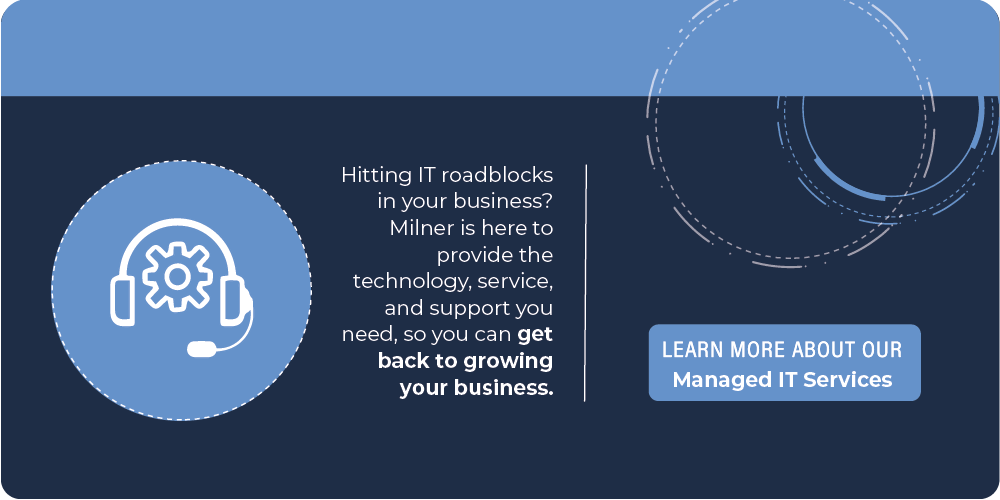.png?sfvrsn=c1652f09_2)
Oct 17, 2022
Our workforce configurations have changed over the past few years, requiring businesses and employees to be more vigilant about cybersecurity. As we all know, cybersecurity should no longer be the sole responsibility of IT departments, and employers should be aware of the importance of keeping their employees educated and prepared; yet nearly one-third of Americans say they “sometimes,” “rarely,” or “never” install software updates. These cybersecurity best practices listed below can help you improve your own security and make your workplace more secure today.
Cybersecurity threats can be prevented, detected, and remedied by everyone, as it is estimated that 95% of breaches are caused by human error.
In 2021, 88% of small business owners believed their companies were vulnerable to cyberattacks. In order to protect your organization against future cyberattacks, it is essential to reassess your organization's cyber vulnerabilities.
The importance of creating an inventory of your organization's valuable data and assets, including manufacturer, model, hardware and software information, cannot be understated. Keep track of who has access to important data and information, as well as all storage locations.
Enable automatic software updates to make sure your software and installed apps are up to date as fast as possible. Only install automatic updates from trusted locations (like home or work). Update or use new software if updates and support have been discontinued for your software (also called end-of-life (EOL) software).
Make strong passwords for each account. Password managers can help you generate, store, and manage long, complex passwords for each of your accounts.
The best way to secure your account is to set up multi-factor authentication (MFA). MFA ensures that only vetted employees have access to your business-connected accounts.
Many of us overlook the fact that cars, appliances, fitness trackers, lighting, home security, and many other devices all contain sensors that can communicate with one another. As these devices become more commonplace in our homes, it's crucial that we keep them secure by following the tips listed below.
Firewalls help block malicious traffic and unnecessary outbound communication on your devices. Malware can be detected, quarantined, and removed with antivirus software.
Make electronic copies of important files and store them safely in order to protect valuable work, photos, and other digital information. You can do this using cloud software in addition to manual storage devices like USBs. A secure and safe alternative location offers an additional layer of security for storing data.
Keep an eye out for scams, malicious attachments, and phishing. Verifying email senders with alternative methods (e.g. phone call) is crucial in high-risk transactions.
Many homes use wireless routers as a convenient way to allow multiple devices to connect to the internet from different parts of the home. This means that all of your devices using the router are vulnerable. To make your router and your home more secure, change the name of your router to a unique name that won't easily be guessed by others. Change the preset passphrase on your router as well.
Even with the best safeguards in place, cyber incidents still happen. Having a thorough response plan will reduce risk to your business and send a positive message to your customers and employees. Milner believes it is important to monitor network and server equipment for predictive failures rather than just existing threats, so vulnerabilities can be detected before alarm conditions arise. If you are ready for a quote or to talk to an IT expert, contact Milner for help with your comprehensive cybersecurity needs.
